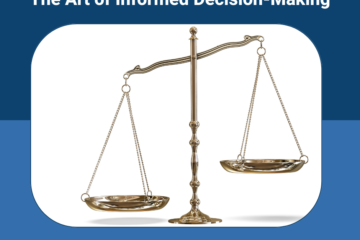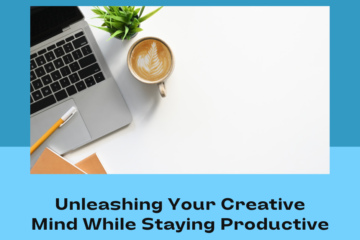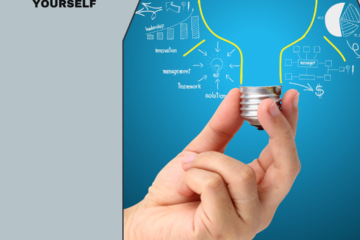
Introduction:
In this age of “information overload,” our minds are constantly being hit with data, from the news in the morning to all the alerts on our phones. Our brain, an evolutionary marvel, tries to be as efficient as possible by processing information at the speed of light. In our haste to streamline, we often take mental shortcuts that lead to cognitive biases that affect how we do decision making without us realizing it. These biases can help us sometimes, but they can also lead us astray, clouding our judgment and taking us away from objective thinking. These mental tendencies aren’t just oddities; they’re strong forces that affect how we think, what we do, and how we connect with others. Realizing their power is the first thing we can do to protect ourselves from being led astray by them. A better understanding of these biases helps us make choices using a balanced mix of intuition and critical thinking. This way, we can move through the complicated terrain of modern life with both speed and insight.
What are Cognitive Biases?

At its most basic level, a cognitive bias is a deviation from objective reality that shows up as a habitual mistake in the way we think that affects how we make choices, judge things, and understand things. It’s surprising that these attitudes don’t show how smart or analytical someone is. No one is safe, not even smart business leaders or scientists with years of experience. The fact that these biases occur shows how our brains have changed over time. In the past, our ancestors had to make quick choices to stay alive in a world full of danger and uncertainty. For this reason, the brain came up with ways to handle information very quickly by using patterns and heuristics. In ancient times, these short-cuts were very useful, but in today’s complicated world, they can lead us astray. In today’s complex world of data and stimuli, these inherited cognitive biases may make things too easy, which can lead to misunderstandings, bad judgments, and even bad choices. Figuring out what these biases are and where they come from helps us understand how the mind works and helps us avoid getting lost when it goes in the wrong way.
Common Cognitive Biases in Decision-Making

1. Confirmation Bias:
This widespread bias is our tendency to pick out information that supports what we already think and believe, often at the cost of evidence that goes against what we think. It comes from the fact that we want our thoughts to be consistent; our brains are hardwired to avoid problems and like it when things are confirmed. Think about a situation in which someone strongly backs a certain election candidate. They might easily look for news stories or conversations on social media that say nice things about the candidate they like, while ignoring or ignoring sources that say bad things about them. The risk here is that it creates a “echo chamber” where people’s opinions are constantly reinforced. This could lead to a narrow view of the world and bad decisions.
2. Anchoring Bias:
When we look into the psychology behind this bias, it’s clear that our thoughts tend to stick to the first piece of information we are given and use it as a point of reference, or “anchor,” for all the decisions that follow. In situations involving numbers and values, this happens a lot. Imagine a real estate agent showing a $500,000 home. Even if you find out later that the house has a lot of building problems and may be priced too high, the price you paid at first has already set a standard for you. The agent may then offer a “reduced” price of $450,000, which may make you act quickly on what you think is a good deal, even if the real value should be much lower because of the problems with the house. This bias shows how strong first views can be, affecting how we think about and make decisions in the future.
3. Overconfidence bias:
Being sure of yourself can be appealing. It gives off an air of power, skill, and charm. But what happens if skill isn’t there to back up trust? Next, we have the overconfidence bias. Our minds have a glitch that makes us think we know more or are better at things than we really are. This can show up in many different ways in the business world. An entrepreneur might start a business without doing enough market research because they are sure that their product will do well. Or, an investor who has made a few good trades might think they have figured out the market and make more investments without doing their research first. This kind of overconfidence can be dangerous because it can keep people from seeing possible risks and make them unwilling to listen to advice or learn new things.
4. Availability Heuristic:
It’s in our nature to be good at remembering current events or important memories. This is what the availability heuristic is all about. Basically, something is more “available” in our minds when we can remember it quickly. This means we give it more weight when making decisions. Think about what happened after a recent news story about a plane crash. Statistics show that flying is one of the best ways to travel, but a story like this might make people not want to fly because they will remember the recent crash and think it’s more dangerous than it really is. The availability heuristic shows us how important it is to get more information and not just use the newest or most vivid data to make choices.
5. Loss Aversion:
Loss aversion is an idea that comes from both psychology and economics. At its core, it’s the idea that the psychological pain of losing something is about twice as strong as the psychological pleasure of getting something of the same value. In real life, this means that people might do anything to avoid possible losses, even if it means missing out on bigger possible gains. Imagine an owner who won’t sell a stock that is going down in value because they don’t want to “lock in” a loss, even if they could use the money to make better investments elsewhere. Or think about a business owner who doesn’t want to switch from a product line that’s losing popularity because they’ve put a lot of time and money into it, even though signs from the market show that they should. Fear of losing can stop people from coming up with new ideas, making changes, and making choices that put short-term relief ahead of long-term benefit.
Mitigating the Impact of Cognitive Biases

Even though cognitive errors are a natural part of our minds, they aren’t unstoppable. We can lessen their effects and make decisions that are clearer and more objective if we know what to do and use the right tactics. Here are some things we can do to actively fight these natural tendencies:
Awareness is Key:
Admitting fault is the first step in any process of making things right. It can be liberating to realize that our brains are subject to these biases, no matter how critical or logical we think we are. We can consciously question our preconceptions and look for information that might go against what we already think when we are aware of a possible bias, like confirmation bias. Basically, it’s about becoming aware of our internal biases and changing how we make decisions to account for them.
Seek Diverse Perspectives
It’s simple to stay in your own little world of information, especially now that we live in a time when computers show us more of what we already like or agree with. To fight this, it’s important to create an open conversation space and look for different points of view. Working with people who have different experiences, backgrounds, and points of view can help you see things in a new way and challenge your ideas. For example, in a team meeting, one person could play the “devil’s advocate” part and purposely disagree with the majority opinion. This would make sure that more points of view are heard.
Avoid Decision Fatigue:
Our mental reserves get lower as the day goes on, and we have to make more choices, some of which are minor and some of which are very important. This makes us more likely to fall for cognitive biases. Being aware of this helps us plan to make important decisions when our minds are at their best. Moreover, cutting down on the number of pointless choices, like what to wear or eat every day, can free up mental energy for more important tasks.
Employ Decision Frameworks:
Structured models can help you make decisions in a way that makes sense and takes into account all the important factors. When biases might otherwise skew processes, tools like SWOT analysis (which examines strengths, weaknesses, opportunities, and threats) and the decision matrix method (which rates choices based on different factors) can make processes more objective.
Continuous Reflection and Feedback:
Making a culture where getting feedback on a regular basis is valued and promoted can help find and fix biases. Thinking about past choices and figuring out what went well, what didn’t, and why can help us understand how we make choices and where our biases might be showing up.
Slow Down:
In the fast-paced world of today, there’s often pressure to decide quickly without saying it. But a lot of biases do best in fast-paced, dynamic settings. For instance, the anchoring bias is based on the fact that our brains tend to focus on the first piece of information they get. By actively slowing down the way we make decisions, we give ourselves time to think about all the information we have, compare different points of view, and make sure our choices aren’t just automatic responses to our biases. When you have to make a tough choice, you might want to “sleep on it” or put the issue away for a while so you can look at it again with fresh eyes.
Question Assumptions:
Every opinion or point of view we have is based on a set of assumptions. As an example, what we think of as a “good investment” is often based on past events, rumors, or what we think are the norms. By actively questioning these foundations—asking ourselves why we believe the things we do and whether there is evidence to back them—we can tell the difference between decisions that are based on bias and decisions that are based on good reasoning. This constant questioning of ourselves helps us get rid of beliefs that don’t serve us and makes sure that the choices we make are based on facts.
Training and Workshops:
Even though each person’s awareness is very important, learning and action by a group can have a bigger impact. You might want to spend money on cognitive bias workshops or training for your team or company. The majority of the time, behavioral psychologists or decision scientists who are knowledgeable about biases run these sessions. People can learn to spot biases in action, figure out where they come from, and get tools to lessen their affects through interactive sessions, real-life case studies, and group activities. This not only helps people grow as individuals, but it also helps businesses make decisions based on good information.
Implement a Bias Checklist:
For important choices, you might want to make a “bias checklist.” Before making a final choice, go through the list again to make sure that common biases haven’t skewed the process. This can be the last line of defense against mistakes and make sure that the choice at hand is looked at in its entirety.
Conclusion:
Cognitive biases are a part of human cognition, guiding us down unconsciously chosen paths. However, understanding these biases is crucial for making informed decisions. Recognizing them is like having a map of a new territory, providing insight and guiding us towards better options. However, it’s not enough; we must actively reference this map, especially at critical moments. Understanding our internal biases is essential for informed decision-making, as it enhances group dynamics, fosters mutual respect, and facilitates synergistic decision-making. The essence of decision-making is not about eliminating biases but mastering them. It’s about harnessing our capacity for reflection, learning, and growth. By embracing this journey with humility and determination, we elevate our own decision-making abilities and contribute to a more discerning collective consciousness.



0 Comments